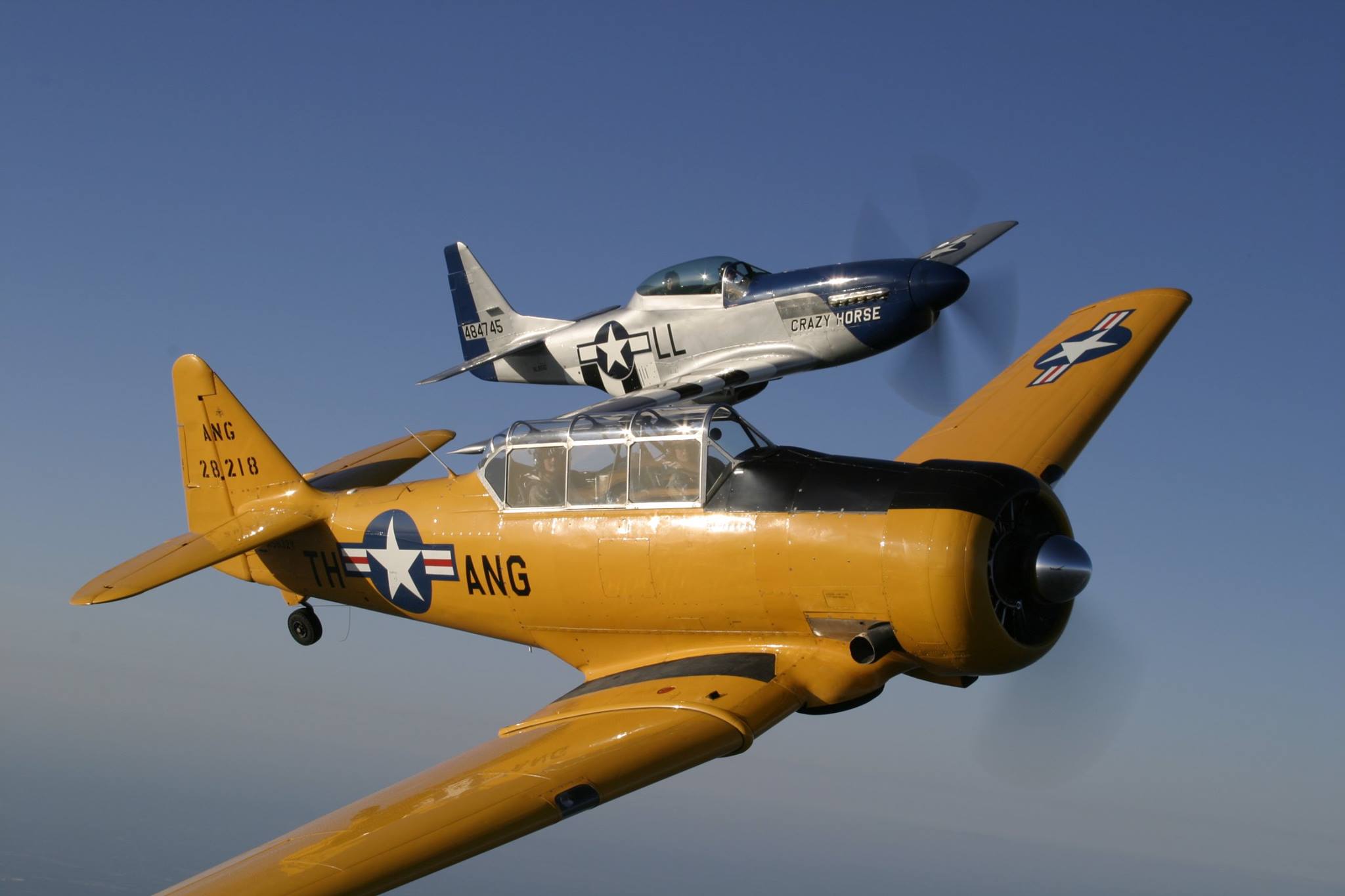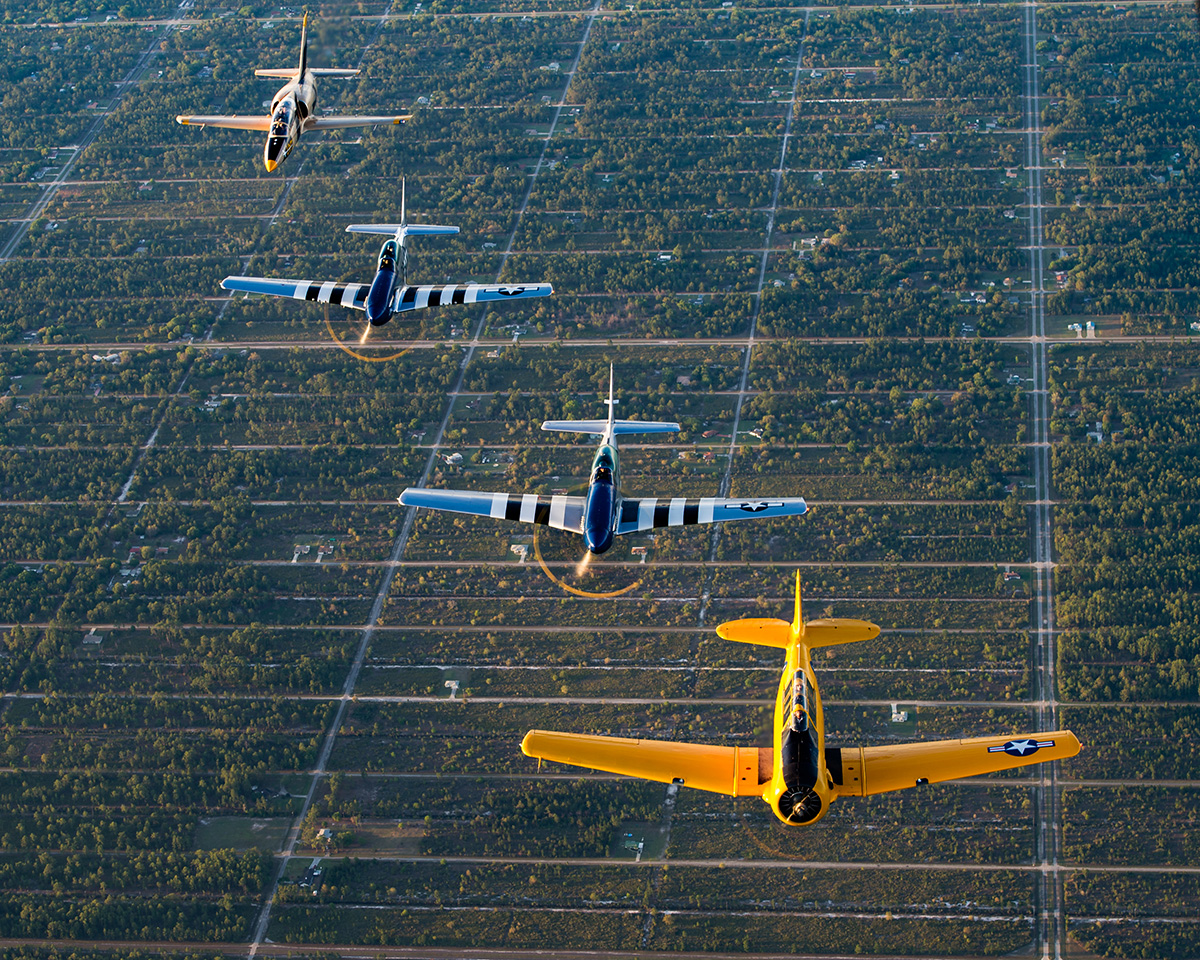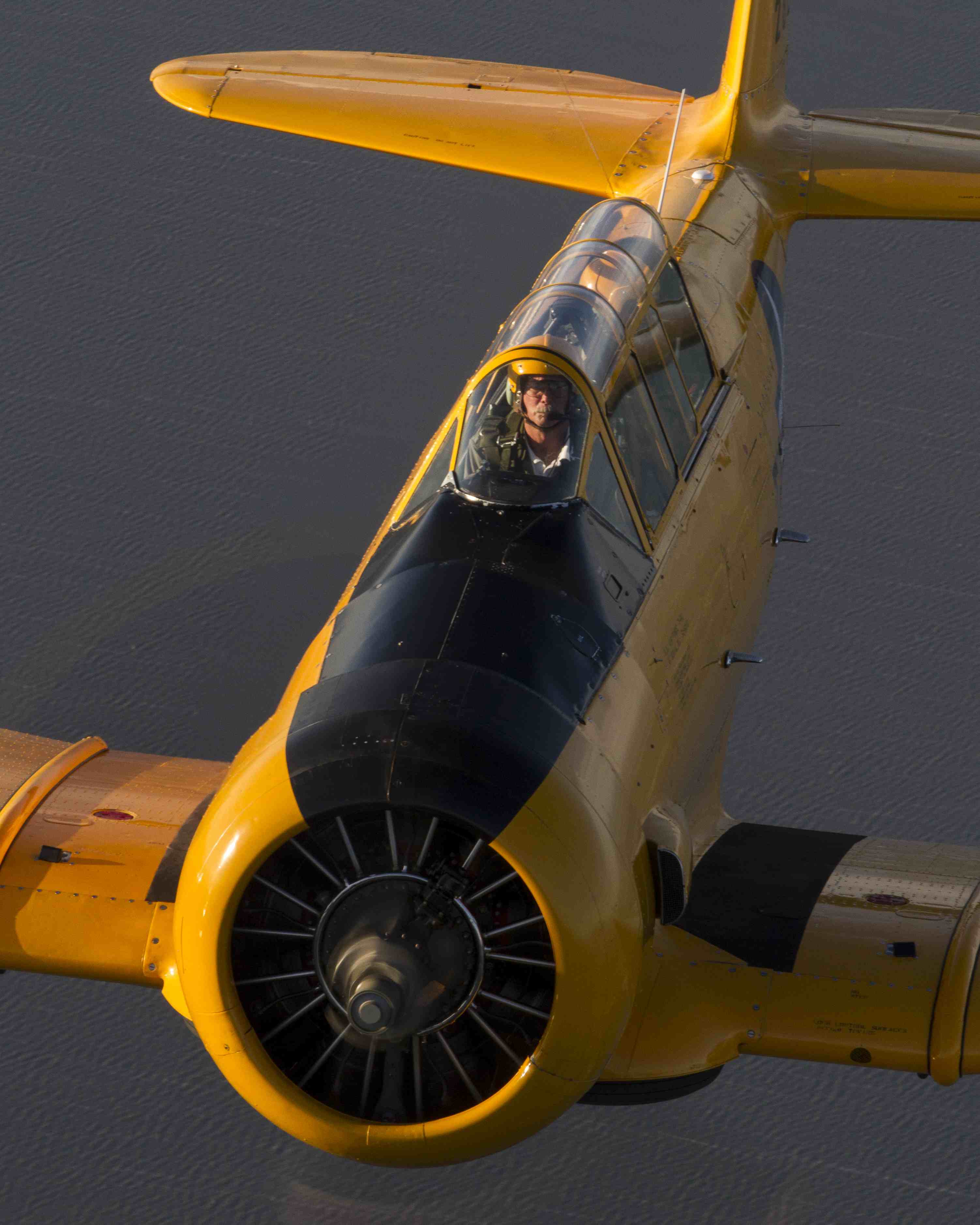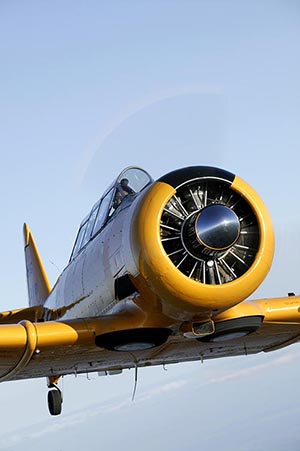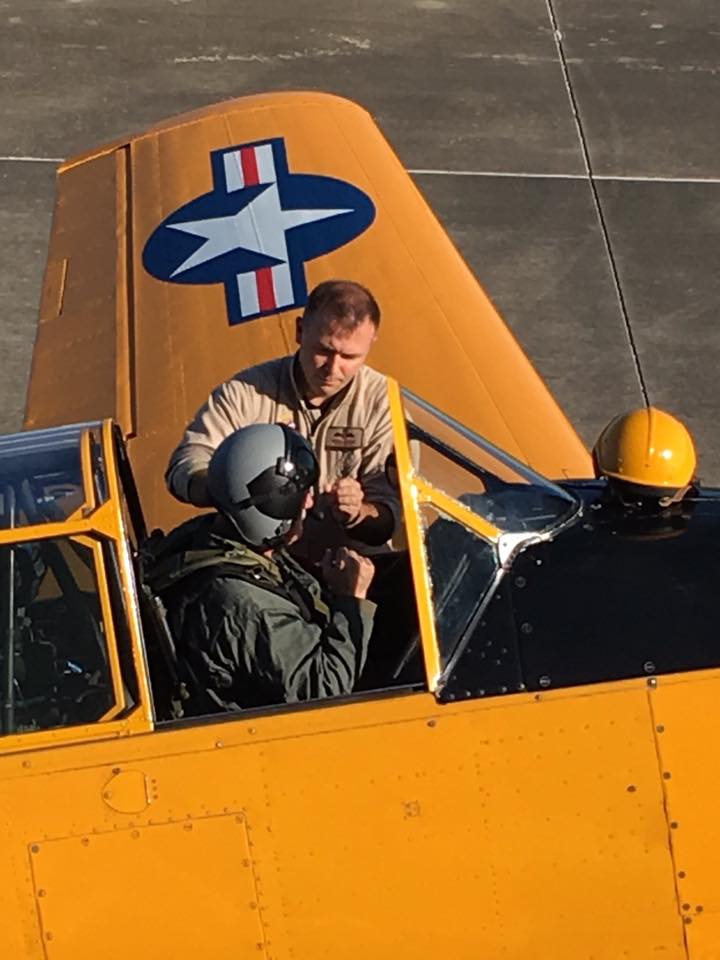It takes a TEXAN to tame a MUSTANG!
Today, like years ago, the importance of the T6 Texan experience.
By Marco Rusconi
Learning how to operate airplanes engineered and built in a different time feels like a journey. As we learn to compensate for the idiosyncrasies of each type we gain a front row seat to the different way aircraft designers tackled challenges of their time and to me, that is fascinating. In the Mustang world, the porthole we get to climb through when we fly one brings us to the pinnacle 1940s design, specifically when it comes to handling qualities, systems design and pilot workload. It is easy to overlook the fact that, from a handling perspective, the average pilots transitioning to the Mustang would have sharpened their tools through their training programs, and most of that preparation would have occurred through exposure to the T6/Harvard/SNJ. The “average” skillset of a pilot was consequently well sensitized to the challenges presented by high performance taildraggers. Modern flight training programs, tailored to the less demanding workloads (relatively speaking) and complex avionics environment found in current frontline operations (airlines, military platforms, etc.), provide a different type of preparation for the average candidate. For this reason, if we choose to step into the high-performance taildragger arena and set ourselves up for success, we must ensure our basic skillset reflects what it would have been in its day. To this end, experience in T6/Harvard/SNJ continues to be the critical steppingstone to flying the Mustang. Most importantly, the “mighty Texan” or “Yellow Peril” as it was affectionately known, allows candidates to consolidate operating with a limited field of view, higher levels of pilot workload during ground handling, takeoff and landing operations, as well as understanding of yaw control (including adverse yaw). Today like in its day, this allows mastery of the required compensation techniques and their positive transfer to our beloved fighter.
Flying an airplane with a limited field of view was not unusual in the 1930s and 1940s and compensation skills were developed early in pilot training. Those skills were therefore easily transferred to other platforms of their day. The challenge we face is that in modern aircraft (better and relatively unobstructed front view, especially in non-taildragger configurations) we learn to rely on focal vision for directional control and not our periphery. Logically, trying to transition to a high-performance taildragger without having developed reliance on periphery vision for directional control can become challenging. The T6/Harvard/SNJ’s relatively reduced field of view presents a necessary solution to the challenge for the unwary new candidate. This I’ve found can become overwhelming for some at first. Undergoing the “sensitization process” in the “Yellow Peril,” allows us to build our comfort levels with a little more time available to us and without the added difficulty of controlling the larger momentums that the Mustang can develop.
Modern training aircraft have also evolved to require lower levels of pilot workload than their predecessors, mostly thanks to the tireless work of their design teams. This is a positive as it leads to higher safety margins and reduces the potential for mishaps. However, if that is our only exposure to aviation, this works to our disadvantage when choosing to operate airplanes of a previous generation. When stepping into the Mustang without exposure to the levels of pilot workload required for ground handling, takeoff and landing would be like trying to run a marathon without any physical conditioning. The speed, power and larger momentum of the Mustang can simply saturate our senses and exceed our ability to manage the workload required if the basics of its day have not been mastered. Taking a “smaller bight” at the problem by allowing the T6/Harvard/SNJ to sensitize us to the pilot workload required will again set us up for success. Undoubtedly, learning how to manage aircraft control, ancillary operations and systems at 90 Kts is simpler than at 150 Kts, but above all, the development of the focus and attention required during taxiing/takeoff and landing operations is the best gift the ”mighty Texan” continues to pass on.
llow Peril” is also a great airplane to master the yaw compensation techniques required to safely operate the Mustang. It provides a good build-up approach to solidify the concept of propeller yaw biproducts (Slipstream, P-Factor, Torque and Gyroscopic precession) as well as teaching us to maximize the use of adverse yaw for our gain (Proper aileron use in a crosswind). The combination of the larger wing surface area, the narrow landing gear and the center of gravity placement in the T6/Harvard/SNJ make this more challenging than the Mustang, and therefore, a very good “transition” trainer. It is not impossible to learn this in the Mustang directly but the learning curve is a lot steeper with a lot less margin for error.
Modern aircraft design has indisputably evolved to present fewer undesirable handling qualities and lowered the amount of pilot workload required in their operation. This has led modern flight training programs to provide a different set of skills to candidates than their predecessors. If we choose to pursue our passion to fly vintage/warbird airplanes, (especially high-performance taildraggers) we must accept that a different and unique set of skills needs to be mastered. These are the same skills that the original training programs refined in their candidates and are a required step for the safe operation of these airplanes. The challenges (part supply, costs to name a few) we all face as operators of these magnificent machines are making margins for error thinner, and stepping into the cockpits of these airplanes with our toolboxes filled with sharp tools will help us best mitigate the risk of their operation. To accomplish this, experience and mastery of the T6/Harvard/SNJ is as important today as it was years ago. Specifically, exposure to the reduced field of view, higher workload levels and yaw mastery make the “Yellow Peril” the ticket to ride to ensuring our tools are sharp and ready for transition to the Mustang .
Hands On T-6 Texan Orientation flights are available for
pilots and non-pilots at Stallion 51 Flight Ops.
Email info@stallion51.com

